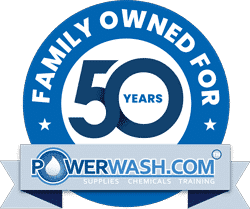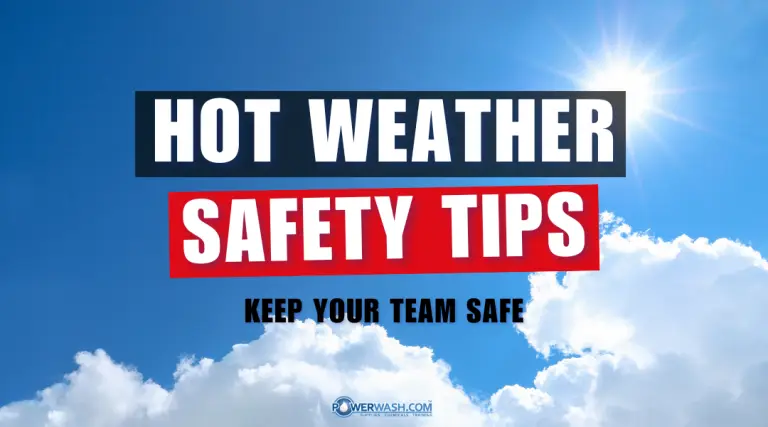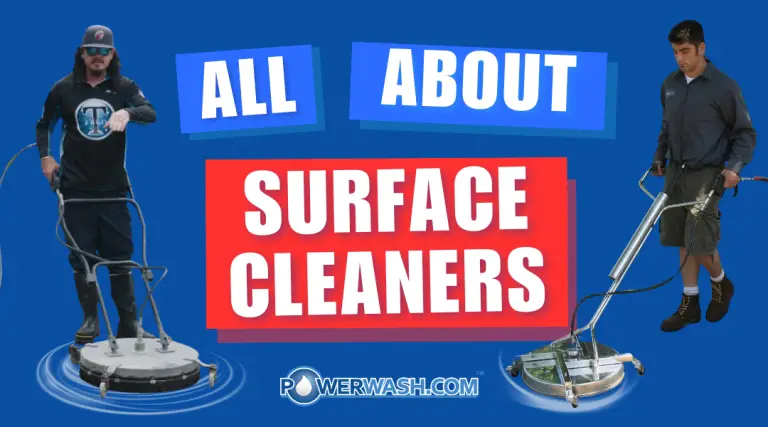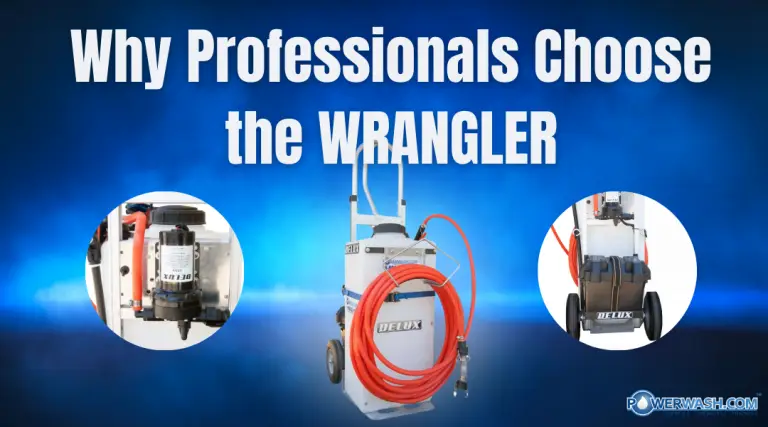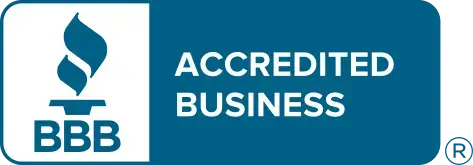- Home
- /
- PowerWash Industry
- /
- LOCKOUT/TAGOUT
Subscribe To Our Newsletter
Stay in the know on the latest products, deals, events, tips & tricks.
Social Media
LOCKOUT/TAGOUT
By Steve Johnson
Airways Systems, Inc.
Lockout/Tagout is covered in section 1910.147, under subpart J (General Environmental Controls) of 29 CFR 1910. Of course, 29 CFR 1910 is the OSHA regulations pertaining to General Industry. The equipment in which unexpected energization or startup of the machines or equipment or the release of stored energy could cause injury to employees.
For those of us in the grease exhaust cleaning business this basically means we have to control the electrical and thermal energy with which we typically work. This control is accomplished by the use of lockout devices and tagged devices.
Locks, tags or other hardware are placed on energy isolating devices, (preferably a disconnect box, circuit breaker or other shutoff device) that can be locked to accomplish this end. Lockout is the preferred method of isolating the energy but if an energy isolating device is not capable of being locked out, the employers program shall utilize be provided by the employer, shall be constructed and printed so that exposure to weather conditions will not cause the tag to deteriorate or the message on the tag to become illegible. The locks and tags must be standardized, substantial, and identifiable to the employee applying the device. Tagout attachment means shall be of a nonreusable type, attachable by hand, self locking and non-releasing, like nylon cable tie. Tags shall include a warning such as Do Not Start or Do Not Operate.
Under 1910.147, employers are required to establish a program consisting of energy control procedures, employee training and periodic inspections to ensure that where the unexpected energizing, start up or release of stored energy occur and cause injury, the equipment shall be isolated from the energy source, and rendered inoperative.
These procedures shall clearly and specifically outline the scope, purpose, authorization, rules and techniques to be used for the control of hazardous energy and the means to enforce compliance. These procedures must contain:
1. A specific statement of the intended use of the procedure.
2. Procedural steps for shutting down, isolating, blocking and securing equipment to control hazardous ergy.
3. Procedural steps for the placement, removal and transfer of lockout devices and the responsibility for them.
4. Specific steps for testing a machine or equipment to determine and verify the effectiveness of the energy control measures.
The lockout/Tagout program must include the provision for a periodic inspection of the energy control procedures are being followed. The inspection must be preformed by an authorized employee other than the ones utilizing the energy control procedures being inspected. Any deviations or inadequacies must be identified and corrected. The inspector must review with each authorized employee the results of the inspection and must certify that the inspection was preformed with the procedure being inspected, the date of the inspection, the employees included in the inspected, and the name of the inspector.
The training portion of the Lockout/ Tagout program must insure that the purpose and function of the energy control program is understood by employees and that the knowledge and skills required for the safe application, usage, and removal of the energy controls are required by the employees. The training portion of the program must include the recognition of applicable hazardous energy sources and the means necessary for energy isolation and control. All other employees whose work may be in the area where energy control may be used, shall be instructed about the procedure, and about the prohibition relating to attempts to restart or reenergize equipment that is locked out or tagged out. Employees must also be trained in the concept that tagged does not provide the physical restraint on the isolating devices that locks do. Even though tags must securely attached to the energy isolating devises, (so that they cannot be inadvertently or accidentally detached during use) they may evoke a false sense of security. Retraining of employees is required when there is a charge in their job assignments, a change in procedures or when a periodic inspection indicates a deviation in procedures or when a periodic inspection indicates a deviation in the use of or knowledge of the procedures. The training and retraining portions of the program must be certified too, just as periodic inspections are.
The procedural steps and sequence of them, necessary for a Lockout/ Tagout program include:
1. Notification of Employees: Af fected employees and affected employees of the host company shall be notified of the applica tion and removal of lockout or tagout devices before the contls are applied and after they are removed.
2. Preparation for Shutdown: The affected employee shall have knowledge of the magnitude, the hazards, and the method or means to control energy.
3. Equipment Shutdown: The equipment shall be turned off according to the proper proce dures for shutting down or turning off the specific piece of equipment .
4. Equipment Isolation: All energy isolating devices that are needed to control the energy to the equipment shall be physically located and operated to isolate the equipment from the energy source(s).
5. Lockout device application: Lockout or tagout devices shall be affixed to each energy isolat ing device by authorized em ployees.
6. Stored Energy Following the application of lockout devices to the energy isolating devices, all potentially hazardous stored or residual energy shall be re lieved, disconnected, restrained, and otherwise rendered safe.
7. Verification of Isolation: Prior to starting work on the equipment that has been locked out or tagged out, The authorized employee shall verify that isolation and deenergization of equipment has been accomplished.
Once the work on the potentially hazardous equipment is complete, but before the lockout &/or tagout devices are removed and the energy restored, the following procedures must be followed.
1. The work area shall be inspected to ensure nonessential items & equipment components are in tact.
2. The work area shall be checked to insure all employees are in a safe position.
3. Each lockout/tagout device shall be removed from each energy isolating device by the employee who applied it.
There are a couple of other important points that must be covered in a Lockout/ Tagout program
When outside servicing personnel are engaged in work that requires lockout/ tagout, the onsite employer and the outside employer shall inform each other of their respective lockout/ tagout procedures.
When servicing personnel are engaged by a crew or other group, they shall use a procedure which affords the employee a level of protection equal to that provided by the implementation of a personal lockout/tagout device. Under a group lock box or comparable mechanism when he begins work, and shall remove those devices when he stops working on that piece of equipment.
This is the short version of the lockout tagout OSHA regulations. The points that can not be forgotten are: Every company must have a written lockout/tagout program. Each employee must be trained. Each employee must use his or her personal (supplied by the employer) lock. No one can put on or remove another persons lock or tag. After the equipment has been locked out, it must be verified by attempting to turn it on with the switch or button. A minimum of one inspection of the program and procedures must be accomplished annually. Everything has to be certified in writing.
This article appeared in the Summer 1997 edition of The Scratch Pad
Share This Post
More To Explore
Beat the Heat: Summer Safety Tips for Power Washing Professionals
Protect Your Crew. Protect Your Equipment. Protect Your Business. When the summer sun blazes, pressure washing jobs don’t stop—but the ...
Soft Wash Additive That Smells Amazing? Meet Fresh Wash
Freshen Up Every Wash Soft washing is all about precision, power, and presentation — and nothing completes a job like ...
Mastering the Art of Pressure Washing: Key Insights on Surface Cleaners
For professionals in the pressure washing industry, a surface cleaner is an indispensable tool, particularly for those who specialize in ...
The Wrangler™ Chemical Sprayer: The Ultimate Tool for Professional Cleaning Applications
For commercial cleaners and pressure washing professionals, efficient chemical application is key to achieving the best results. The Wrangler™ Chemical ...
